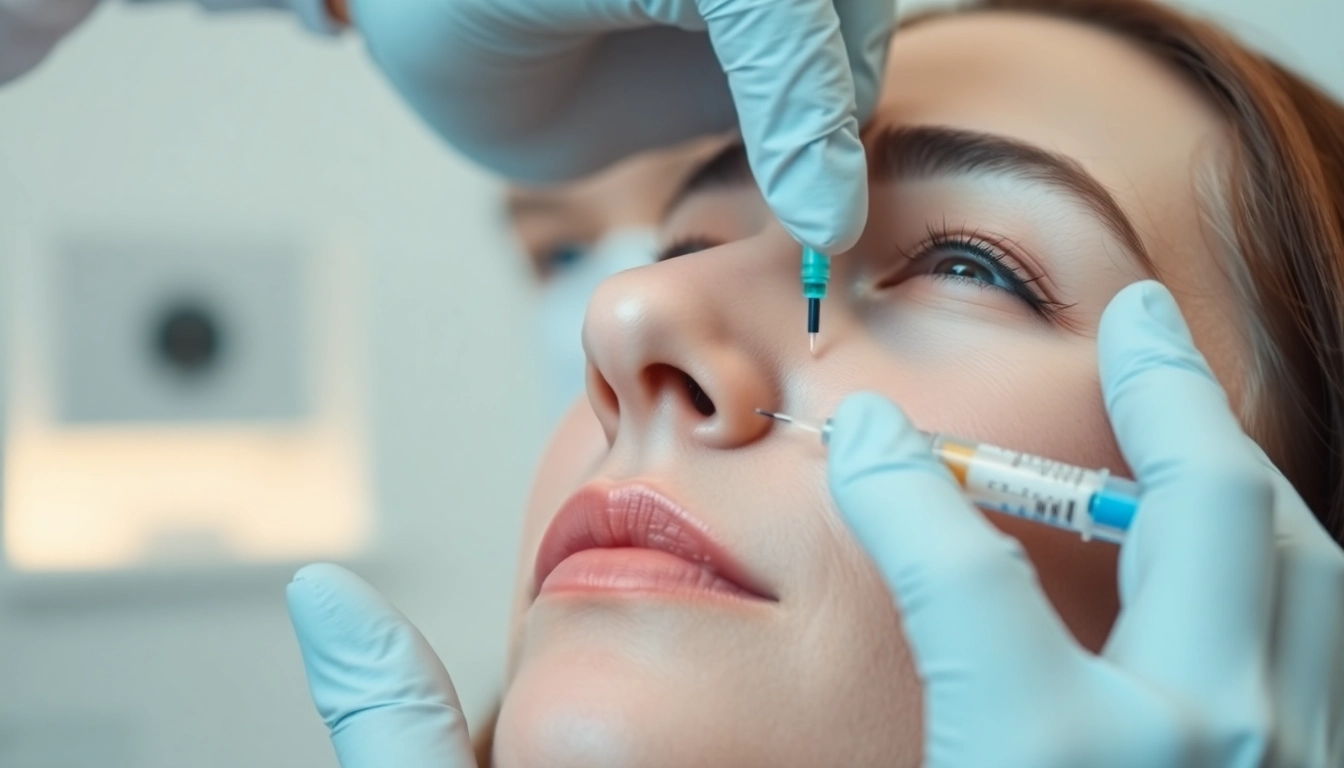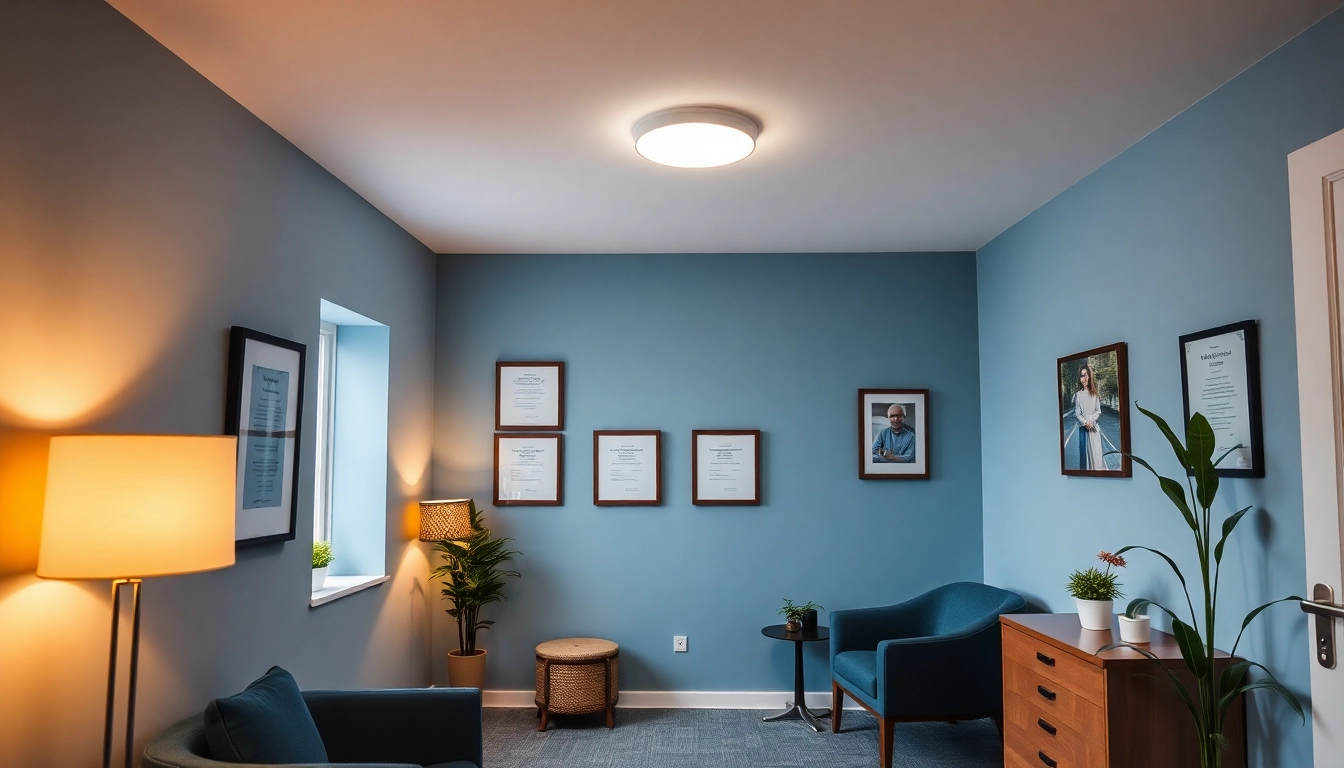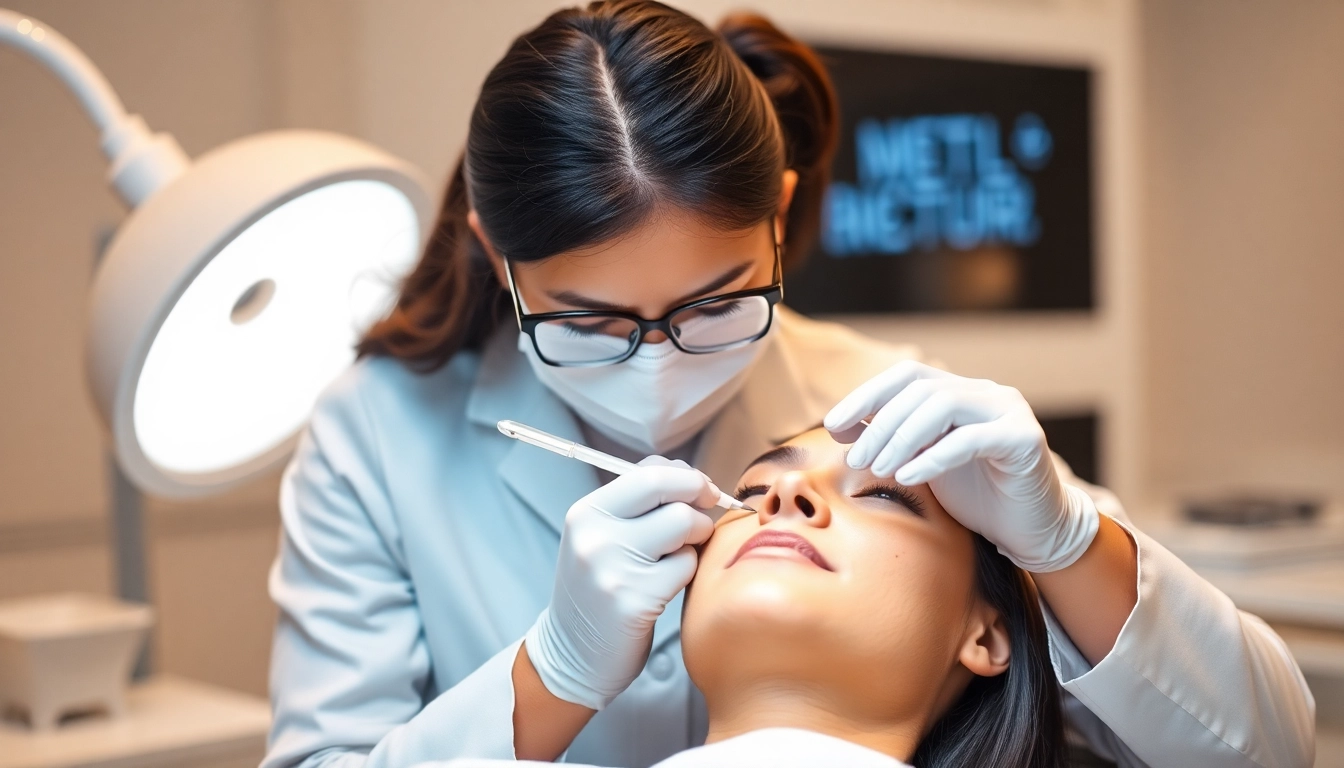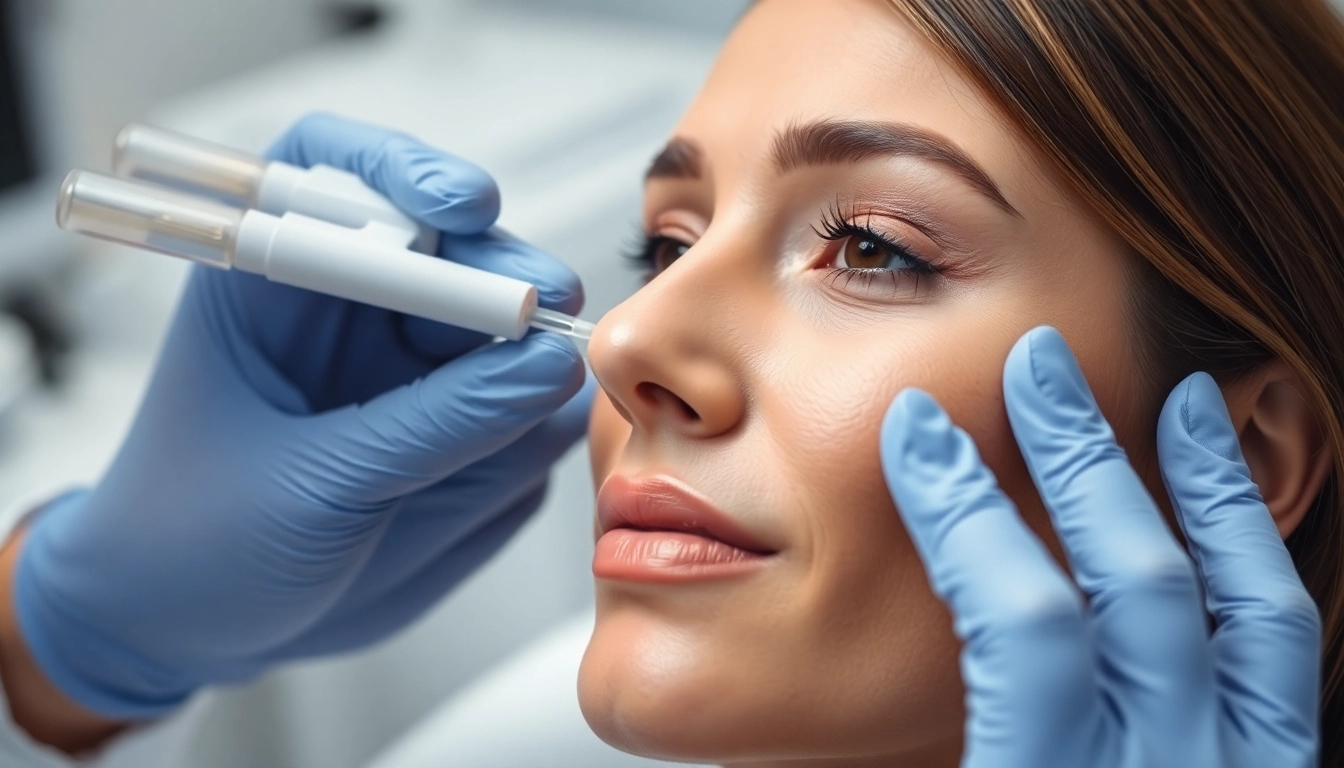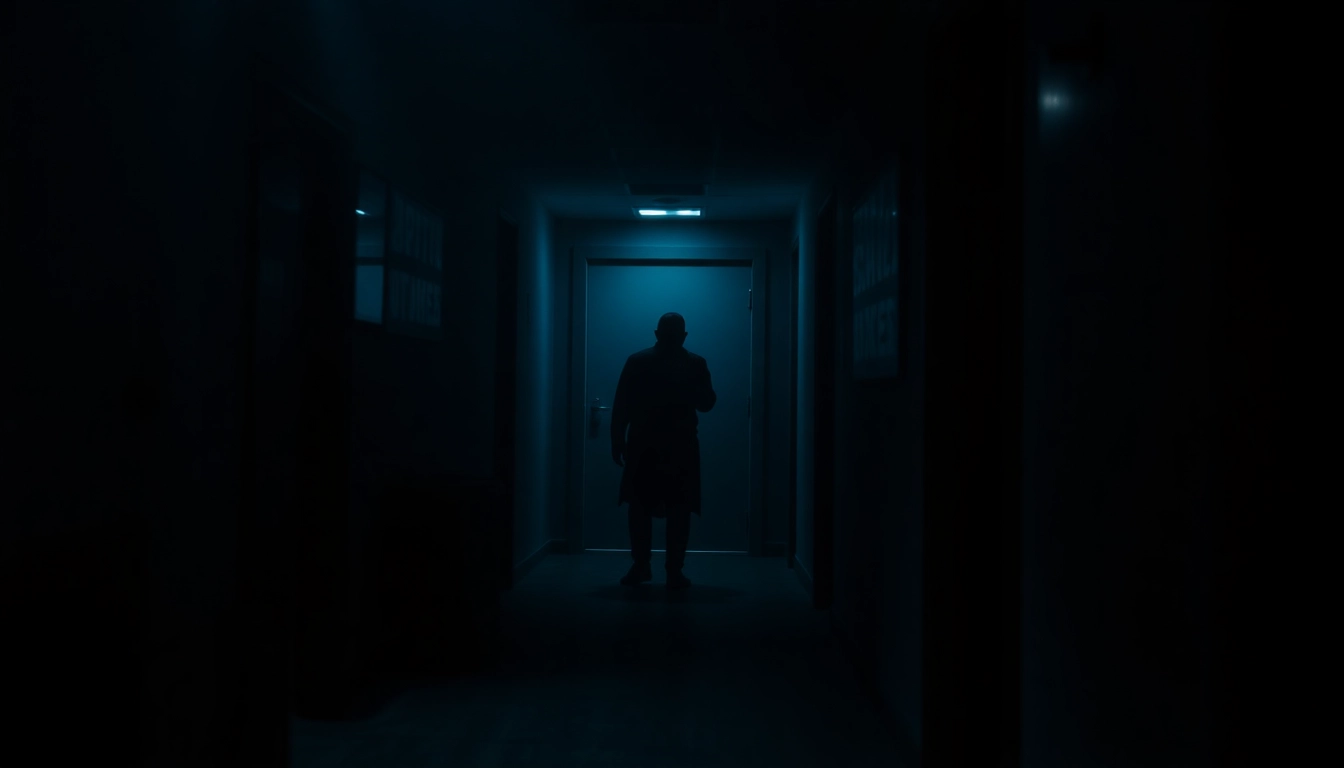Understanding Botox Behandlung
In recent years, aesthetics has become an integral part of modern life, with more individuals seeking non-invasive solutions to enhance their appearance. Among the numerous techniques available, Botox Behandlung stands out due to its remarkable effectiveness and popularity. Understanding what Botox is, how it works, and its various applications is crucial for those considering this treatment.
What is Botox and How Does it Work?
Botox, or botulinum toxin, is a potent neurotoxin produced by the bacterium Clostridium botulinum. While various strains of this bacterium can outperform one another in terms of potency, Botox is typically used in medicine and cosmetic treatments due to its ability to temporarily paralyze muscles. When injected in small doses, Botox blocks nerve signals in targeted muscles, leading to a temporary reduction or cessation of muscle movement.
The mechanism of action is quite fascinating. The botulinum toxin inhibits the release of acetylcholine, a neurotransmitter responsible for stimulating muscle contraction. This results in the relaxation of the injected muscles, leading to a smoother appearance of wrinkles and fine lines.
Common Uses of Botox Behandlung
Botox Behandlung is most commonly associated with cosmetic enhancements, specifically the smoothing of dynamic wrinkles—those caused by muscle movement. However, its uses extend far beyond aesthetics:
- Cosmetic Applications: Botox is widely used to treat wrinkles on the forehead, crow’s feet around the eyes, and glabellar lines (the frown lines between eyebrows).
- Medical Applications: Beyond cosmetics, Botox is also approved for various medical treatments including chronic migraines, excessive sweating (hyperhidrosis), overactive bladder, and even certain eye disorders.
- Cosmetic Enhancements: Some lesser-known uses of Botox include lifting the brow, reducing the appearance of neck bands, and treating conditions like TMJ (temporomandibular joint disorders).
History and Evolution of Botox Treatment
Botulinum toxin was first discovered in the early 19th century, but its cosmetic applications took decades to develop. Initially, the toxin was primarily used for treating medical conditions such as strabismus (crossed eyes) and blepharospasm (eyelid spasms). It wasn’t until 2002 that the FDA approved Botox for aesthetic purposes, marking a significant milestone in cosmetic medicine.
Since then, the treatment has evolved dramatically, with advancements in injection techniques and a deeper understanding of the toxin’s effects, leading to improved safety and efficacy profiles. Today, Botox is hailed as a cornerstone in the field of minimally invasive cosmetic procedures.
Benefits of Botox Behandlung
Immediate Results and Aesthetic Advantages
One of the primary reasons individuals opt for Botox Behandlung is its immediate results. Most patients notice an improvement in the appearance of their wrinkles within just a few days of treatment. These results can last anywhere from three to six months, making it a convenient option for those seeking a short-term enhancement without the need for extensive recovery.
The aesthetic benefits of Botox are clear, as it smooths the skin’s surface and provides a more youthful appearance. Additionally, since the procedure is non-invasive, patients can return to their daily activities shortly after their appointment, making it an attractive option for busy individuals.
Medical Benefits Beyond Aesthetics
Beyond fretting over aesthetic improvements, Botox offers notable medical benefits. In studies, it has been shown to significantly reduce the frequency and severity of chronic migraines for individuals suffering from debilitating headaches. Furthermore, its efficacy in treating hyperhidrosis has changed the lives of many by alleviating excessive sweating, particularly in areas like the underarms, palms, and soles of the feet.
Additionally, Botox’s ability to reduce symptoms of an overactive bladder has provided relief to countless individuals, making it a multifaceted treatment with broader applications in healthcare.
Longevity of Results and Maintenance
Regular maintenance is essential to prolonging the effects of Botox treatment. Though many individuals experience improved skin for several months post-treatment, ongoing sessions can help maintain firmness and elasticity. Many practitioners recommend treatments every three to six months, depending on the individual’s skin type, age, and targeted areas.
Patients often find that with consistent treatments, they require fewer units over time due to muscle “training” that occurs. Therefore, not only does Botox provide immediate aesthetic benefits, but it can also offer long-term enhancement with continued treatment.
Preparing for Your Botox Behandlung
Consultation and Assessment Process
Preparation for Botox Behandlung begins with a consultation—an essential step for candidates to understand the procedure, manage their expectations, and discuss any concerns. During this initial visit, a qualified practitioner assesses the patient’s medical history, current medications, and any existing medical conditions that could complicate treatment.
It’s crucial for patients to be transparent about their previous Botox treatments and any other cosmetic procedures. This information helps the practitioner develop an appropriate treatment plan tailored to the individual’s needs and goals.
Pre-Treatment Guidelines
Before undergoing Botox injections, practitioners usually advise patients to avoid certain activities and substances to minimize the risk of complications. Common recommendations include:
- Steering clear of alcohol and NSAIDs (non-steroidal anti-inflammatory drugs) like ibuprofen for at least 24 hours prior to the procedure to reduce the risk of bruising.
- Avoiding high-intensity exercise before the treatment, as increased blood flow can elevate the likelihood of bruising post-injection.
- Leaving facial fillers or other cosmetic procedures until after the Botox injections, allowing for a more accurate assessment during the consultation.
What to Expect During the Procedure
The actual Botox treatment is relatively quick, typically lasting only 15 to 30 minutes. During this time, the practitioner will clean the injection site with an antiseptic and administer the Botox using fine needles, with patients often feeling only slight discomfort. The depth and locations of the injections depend on the areas being treated.
Some patients may notice results within 24 to 48 hours, while for others, it may take up to a week for optimal effects to become apparent. Patients are usually given post-care instructions to help them navigate the days following the treatment.
Aftercare and Recovery
Post-Treatment Care Instructions
After getting Botox, there are some important guidelines to enhance safety and overall results. Patients are usually advised to:
- Refrain from touching or massaging the treated areas for at least 24 hours to avoid displacing the Botox.
- Avoid excessive heat, such as saunas or vigorous exercise, for a short duration post-treatment to limit blood flow to the treated areas.
- Keep in an upright position for several hours after the injections to prevent the distribution of the toxin to unintended areas.
Common Side Effects and How to Manage Them
Like any medical treatment, Botox presents potential side effects, albeit usually mild. Common side effects include:
- Localized pain at the injection site
- Temporary bruising
- Headaches
Patients can manage these side effects effectively with over-the-counter pain relievers, ice packs, and hydration. However, if unusual symptoms like prolonged headaches, vision changes, or difficulty swallowing occur, it’s essential to contact a healthcare provider.
When to Contact Your Practitioner
Post-treatment symptoms can range from mild to severe. Any unexpected reactions should prompt immediate communication with the practitioner. Signs warranting a call include:
- Unusual swelling that does not subside
- Persistent pain or discomfort
- Signs of an allergic reaction, such as rash or difficulty breathing
Being informed and proactive in your post-treatment care can ensure positive experiences with Botox Behandlung.
Choosing the Right Provider for Botox Behandlung
Qualifications and Experience to Look For
Selecting a qualified provider for Botox treatment affects both outcome and safety significantly. Prospective patients should look for practitioners with comprehensive training in cosmetic dermatology or plastic surgery. Verified credentials, such as board certification, reflect a practitioner’s expertise and commitment to safety and patient care.
Experience also plays an important role; practitioners who have performed numerous Botox treatments will likely possess refined techniques and experience handling complications, if needed.
Evaluating Clinic Reviews and References
Reading reviews online can unveil the experiences of previous patients. Look for patterns in feedback—both positive and negative—related to care, results, and complications. Clinics with consistently high ratings and testimonials from satisfied clients often indicate reputable practices.
Additionally, asking for references directly from the clinic can help in understanding their patient satisfaction and treatment outcomes.
Questions to Ask During Consultation
Prior to proceeding with a treatment, prospective patients should feel empowered to ask their practitioner questions, including:
- What are the expected results and how long will they last?
- What are the potential risks and side effects associated with Botox treatment?
- How do you prevent and manage complications?
- What kind of aftercare will I need, and how should I prepare for the treatment?
Engaging in open communication helps establish trust and ensures transparency, enabling patients to make informed decisions about their Botox Behandlung.
